6 Tips on How To Shop Healthy On A Budget, & Still Lose Weight
How do you eat a nutritious diet while keeping your grocery bill low?
This is a common question I get from a lot of our community.
It can seem like a catch-22 when you want to eat nutritious and high quality foods, but then are on a budget.
But it doesn’t have to be a tricky situation for you – it just takes a little creative thinking and planning.
Recently I had a very inspiring chat with a long time Gabriel Method community member, and now GM certified coach named Christine Kennedy.
Christine has 11 (that’s right ELEVEN!) children, between the ages of 4-21… She knows a little something about shopping on a budget.
The best part is that Christine has found a way to feed herself vibrant nutritious foods, and still managed to lose over 100 lbs, AND she has also introduced this way of eating to her family.
Here are 6 of my favorite tips on how to do healthy grocery shopping on a budget, which were all inspired by Christine. 🙂
1. Plan out your meals
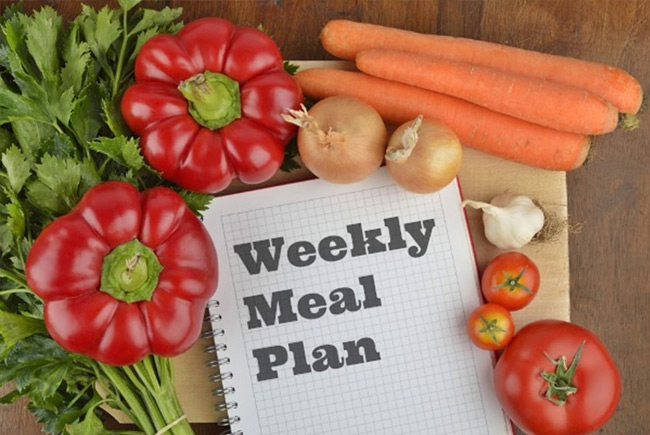
Think about your meals for the next few days, week, or 2 weeks. Whatever suits you and your lifestyle.
What sort of meals would you like to have?
What type of food will give your body life-force vitality and allow you to have high energy?
And be sure to do this planning when you are feeling high energy – not when you are hungry or tired. Often times those are moments where we aren’t thinking as clearly and lean towards unhealthy decisions.
Sometimes finding inspiration for these meals can be tough. And if you have a family and kids that you’re shopping for, sometimes it can be difficult to please all of their taste buds (as Christine, mother of 11 knows a thing or two about!)
Save recipes or meal plans you see while scrolling through Facebook or Instagram. Bookmark them on your computer, or email them to yourself. Then when you need inspiration, you can always refer back to them.
I also have created a Gabriel Method Cookbook, which has lots of super nutritious meals in it, ranging from soups, to salads, to chili, to even desserts! This is another great resource to use when you need meal planning inspiration:
2. Visualize what you’re shopping for before you go

It’s all too easy to arrive to the grocery store and end up standing at the front and thinking, “What did I need again?!”
So after you’ve done your meal planning, write out a list of ingredients that you know you’ll need for certain meals.
Then take a moment to close your eyes, and see yourself going through the grocery store having a successful shopping trip.
Perhaps that means you spend most of your time in the fresh fruit and vegetable section. You appreciate all the color and vibrancy that the living food has, and you see it becoming life force in your body.
You know what you need to get, and you easily find these ingredients. You feel happy and joyful as you move to the meats section, and so on.
Just as when you visualize your perfect body, you can also visualize your perfect grocery shopping trip. For example, a trip where everything is going smoothly and easily and you don’t feel the nagging voice when you go past the sweets or chip aisles. Instead, you feel happy, energetic and excited about the meals you’re going to create with the vibrant, living ingredients.
3. Buy Fruits & Vegetables locally that are in season
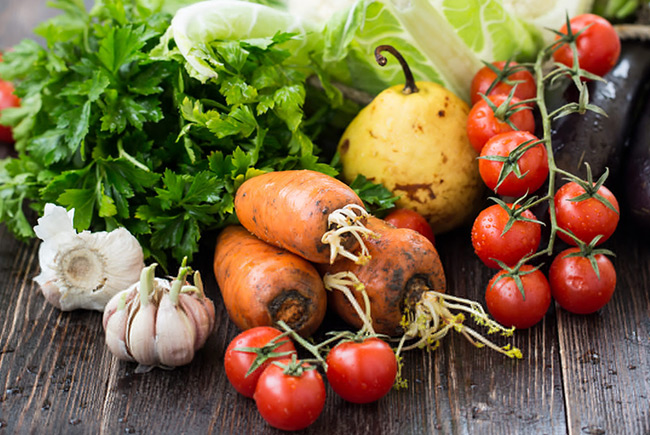
There are many advantages to buying your fresh produce while they are in season, and locally if possible.
The two of the biggest perks of doing this are the price & quality.
The price is going to be lower because there is a larger supply of the product while it’s in season.
And the quality will be better as well, because the fruits or vegetables have had a relatively short period of time between when they came from the plant, to when you are buying them.
This is the way our great ancestors used to eat before all the technology came along to allow humans to grow a much wider range of produce, in a much wider range of environments.
Now although not all of these technological developments are bad, there is still something to be said for eating in season and locally.
More and more grocery stores are now marking labels for what is locally produced. And these things are often on special. So be sure to grab them and stock up.
4. Check the organic, see what is on special, & compare prices
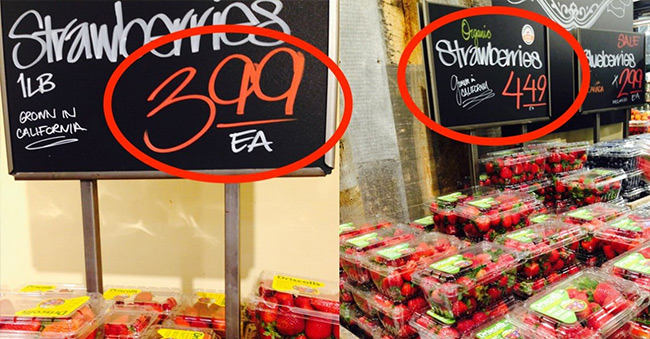
One of my recommendations in the Gabriel Method is to eat organic when you can.
It’s not always possible to do this, because usually the price is higher. But don’t be too concerned with what you can’t do.
Do what you can. Don’t focus on what you can’t. If you can buy some things organic – great! If you can’t, that’s ok too. The most important thing is that you focus on what you can do!
If you’ve got an organic shop that’s near you, go there first and see what is on special.
Sometimes organic is more expensive. And sometimes it isn’t. You simply need to have a browse around.
There are often great deals on organic meats, and when you keep an eye out for them, you can stock up.
However, buying organic meat is really important and here’s why:
In conventionally farmed meat (non-organic meat), the cows are being fed grains, which changes the fats in the meat from omega 3 to omega 6.
This makes the fat more inflammatory, which causes you to gain weight.
And even worse, often times non-organic meat has been given hormones to cause the animal to gain weight, pesticides, nitrates, sometimes they even put arsenic in some foods because it’s a preservative and keeps the food from smelling bad.
You can often get organic meat for a $1.00 or $2 more per pound than non-organic.
And remember, meat isn’t the only good source of protein for the body. So not every meal needs to have meat to be a protein nutritious meal.
5. Go to your local farmer’s market at least once a week
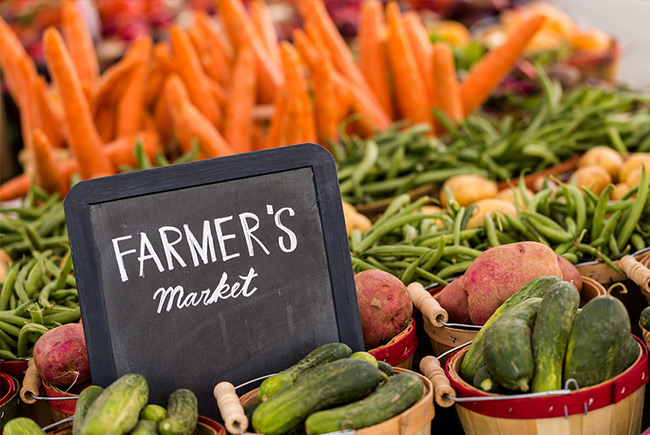
This is a great family outing, and it will also save you big bucks on the grocery bill.
Go and have a chat with your local farmers in the community.
You’ve got people who can tell you if their using pesticides, and you can speak directly with the farmer.
You’re going to get food that is in season, and most of the time it’s going to be cheaper than in the grocery because you’re cutting out the middle man. You’re getting your food straight from the farmer!
How wonderful is it to know the person who has put the love and care into the vegetables and fruit that you are eating? If you feel good vibes from the farmer, then that farmer has likely put good vibes into your food… buy from them!
And when it comes to meat, it’s also a great place to buy your meat because again you can speak to the farmer and ask them about their animals.
6. Buy in Bulk & Freeze
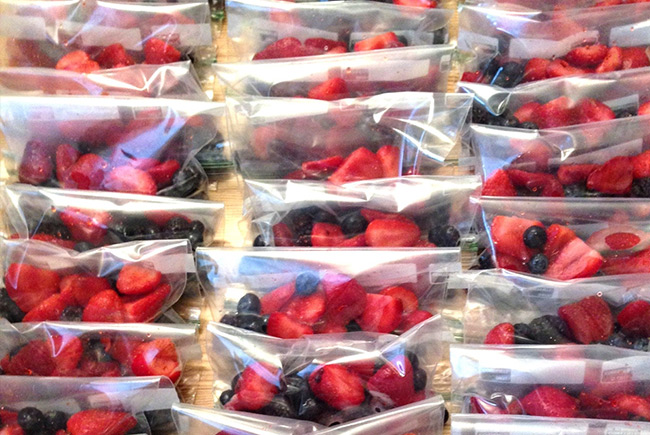
Think about the foods that you and your family consume often, and buy those items in bulk.
Perhaps you buy a lot of nuts, or seeds, gluten-free grains, dried fruit or raw cacao.
If you are buying nuts and seeds in bulk, be sure to freeze them. Nuts and seeds have a shelf life, because they are full of good fats and oils, which mean they can spoil.
And if there is a product that you consume a lot of but doesn’t seem to be available in bulk, be sure to ask your grocery store. You’d be surprised with how willing your local grocery store will be to help you out, and perhaps there are product that they could offer in bulk, but currently don’t because no one has asked for it.
What are some other of your favorite tips and tricks on how to eat healthy on a budget?
Inspire the rest of the community by joining the conversation below!

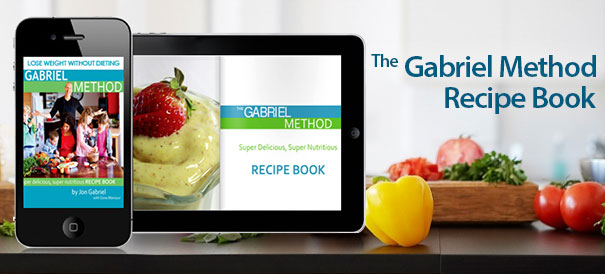

Do You Have Questions for Brian?
Ask Questions & Share Your Comments!
For help with your purchase please contact help@thegabrielmethod.com